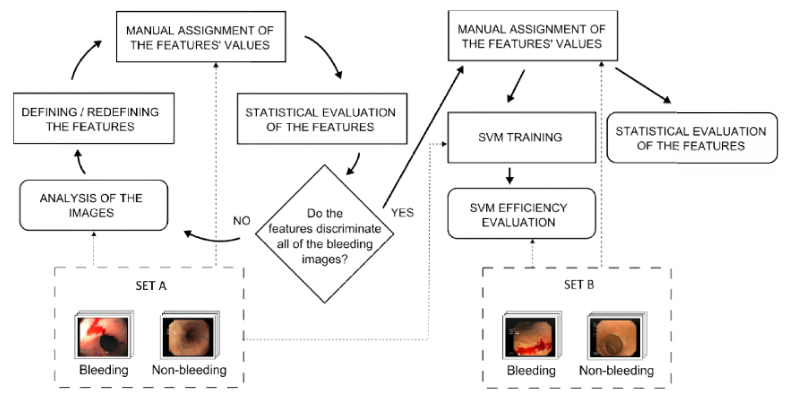Adam Brzeski
Aims: To define a set of high-level visual features of endoscopic bleeding and evaluate their capabilities for potential use in automatic bleeding detection.
Study Design: Experimental study.
Place and Duration of Study: Department of Computer Architecture, Faculty of Electronics, Telecommunications and Informatics, Gdansk University of Technology, between March 2014 and May 2014.
Methodology: The features have been established and evaluated on images extracted from 135 different endoscopic examinations. A set of measures were proposed in order to evaluate the quality of the features. The potential contribution of the features for bleeding detection is evaluated by utilizing an SVM classifier on the vectors constructed by manually assigning the features values to the endoscopic images. Potential limitations of the features' implementations are simulated by introducing noise to the assigned values. Finally, the recognition efficiency of the method is compared to implementations of two bleeding detection algorithms from the literature.
Results: The experiments show a potential of bleeding detection efficiency of 95%, assuming perfect features' implementations, and 90% when features' evaluation efficiency of 95% is assumed.
Conclusion: By introducing the visual features, the challenging problem of detecting bleeding in endoscopic images is split into a set of smaller image processing problems. The divide-and-conquer approach based on the proposed visual features is capable of achieving high detection efficiency; at the same time providing additional benefits of a more apparent processing scheme, and a possibility of justifying the …
British Journal of Applied Science & Technology, 2014, 4.27: 3902.

.png)